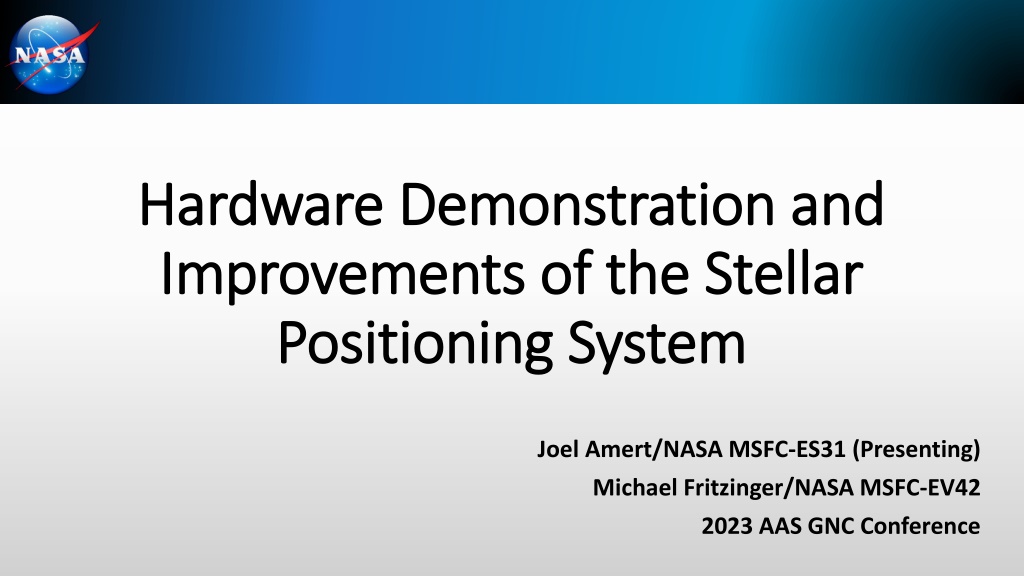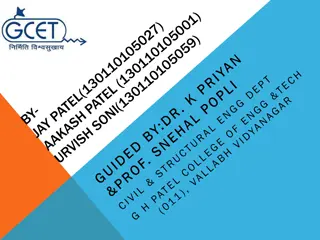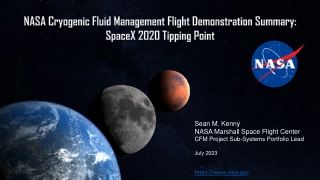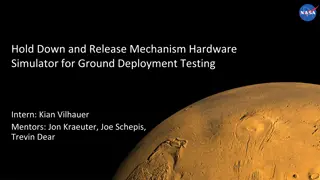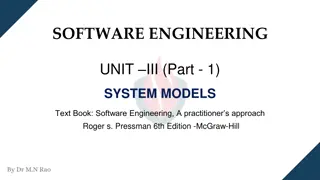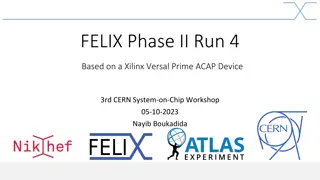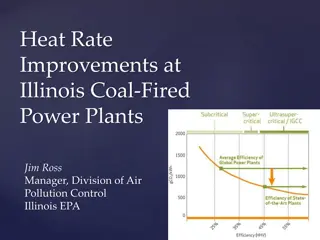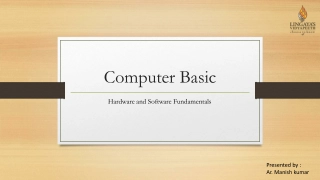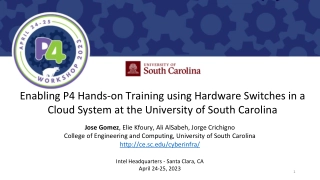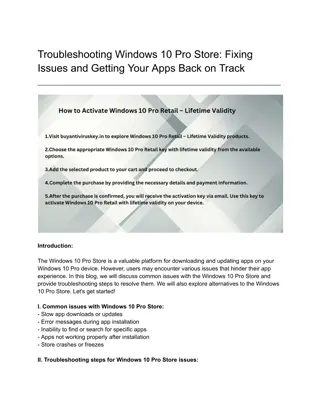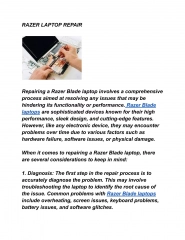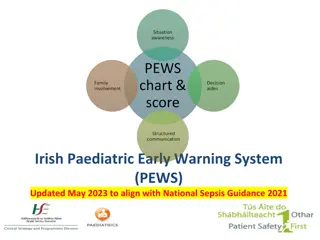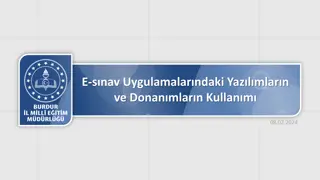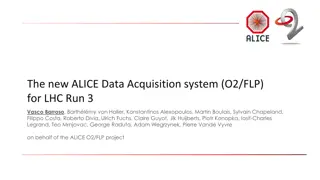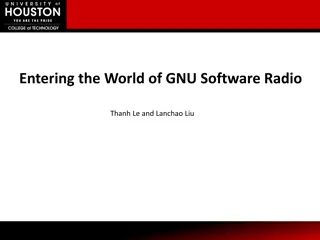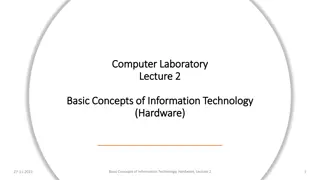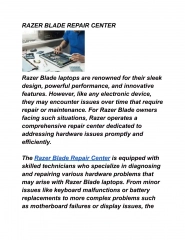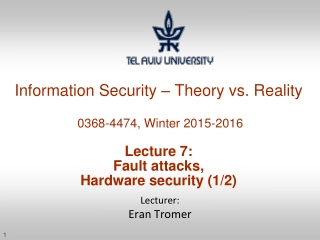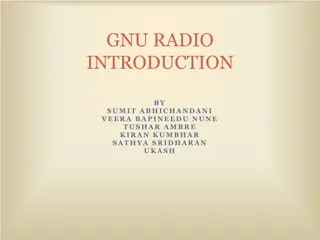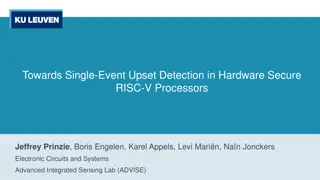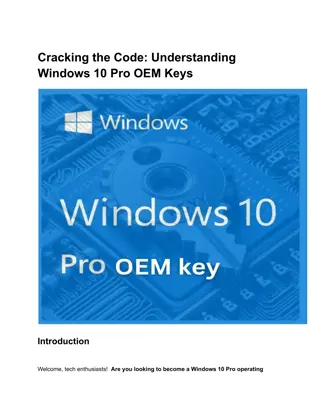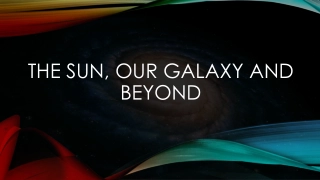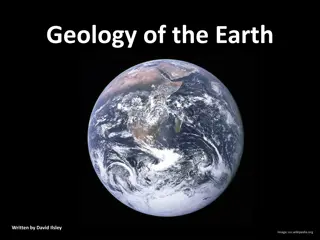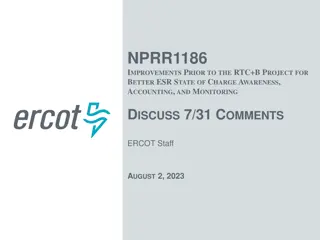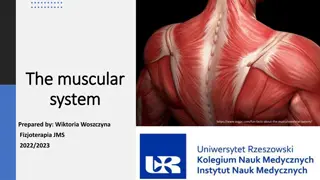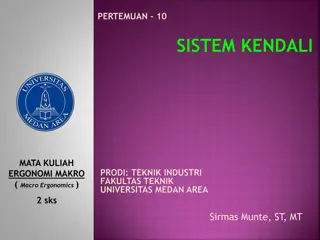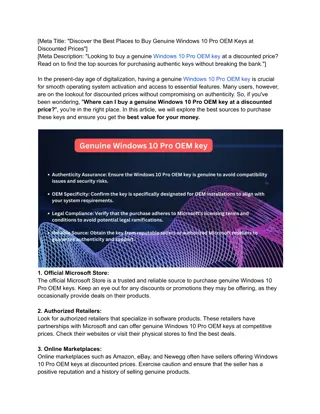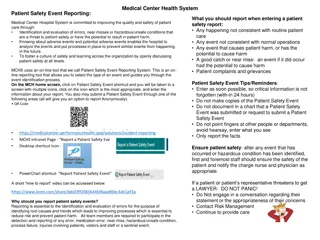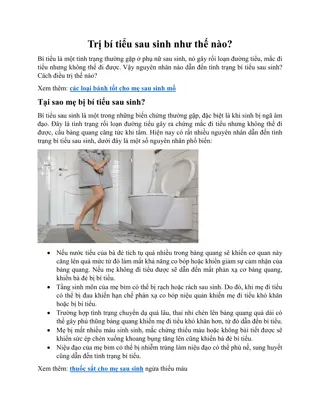Hardware Demonstration and Improvements of the Stellar Positioning System
The Hardware Demonstration and Improvements of the Stellar Positioning System (SPS) involve utilizing ancient celestial navigation techniques for lunar exploration. SPS combines central-body-relative observation with star-field observation to determine absolute position, reducing mass/power impacts on future systems. By building upon maritime methods and utilizing components with high TRL, SPS aims to enhance non-GPS navigation capabilities for lunar missions. The process includes measuring the body, star field, and absolute time to calculate precise locations on celestial bodies.
- Stellar Positioning System
- Lunar Exploration
- Celestial Navigation
- Hardware Demonstration
- Space Flight Components
Hardware Demonstration and Improvements of the Stellar Positioning System
PowerPoint presentation about 'Hardware Demonstration and Improvements of the Stellar Positioning System'. This presentation describes the topic on The Hardware Demonstration and Improvements of the Stellar Positioning System (SPS) involve utilizing ancient celestial navigation techniques for lunar exploration. SPS combines central-body-relative observation with star-field observation to determine absolute position, reducing mass/power impacts on future systems. By building upon maritime methods and utilizing components with high TRL, SPS aims to enhance non-GPS navigation capabilities for lunar missions. The process includes measuring the body, star field, and absolute time to calculate precise locations on celestial bodies.. Download this presentation absolutely free.
Presentation Transcript
Hardware Demonstration and Hardware Demonstration and Improvements of the Stellar Improvements of the Stellar Positioning System Positioning System Joel Amert/NASA MSFC-ES31 (Presenting) Michael Fritzinger/NASA MSFC-EV42 2023 AAS GNC Conference
Background Background Early Lunar exploration requires using non-GPS navigation techniques until navigation infrastructure is built on or around the Moon Stellar Positioning System (SPS), which relies on the ancient practice of celestial navigation, is a viable solution* SPS utilizes a central-body-relative observation in conjunction with a star-field observation to generate absolute position Used extensively in ancient marine navigation Work focuses on demonstrating SPS using space flight components with high TRL Goal is to use components that lunar landers/rovers will already be carrying in order to reduce the mass/power impacts to future systems *J.J. Parish Et al., Stellar Positioning System (Part I): Applying Ancient Theory to a Modern World , AIAA/AAS Astrodynamics Specialist Conference, 2008. *D. Woodbury Et al., Stellar Positioning System (Part II): Overcoming Error During Implementation , AIAA/AAS Astrodynamics Specialist Conference, 2008. 2
Building Upon Maritime Methods In historical marine navigation, a sextant was used to measure the absolute location on the surface of the Earth Navigation Steps: 1. Measure angle between Polaris and the Horizon This can be converted to latitude 2. Measure angle between a different known star and the horizon, and record the measurement time This is used in conjunction with look-up tables to calculate the longitude SPS uses a similar process with components that have space heritage
SPS Process The SPS requires three measurements: Measurement of the Body Instead of a horizon measurement, the local gravity can be measured using accelerometers or an inclinometer One option is an Inertial Measurement Unit (IMU) that includes accelerometers Measurement of the star field Instead of single star measurements, a star tracker can be used to calculate a full measurement of the star field Absolute Time An accurate clock can be used to calculate the orientation of the star field relative to the body Other Requirements: Geopotential of the body as a function of body-fixed location IMU orientation relative to the star tracker Body to inertial conversion as a function of time Static observations These measurements are combined to calculate the absolute location on the surface of the body 4
SPS Governing Equation SPS Governing Equation ???? ?? ??? ?? ? ? ?? ? ??? ? = ?? ?? = ??? is the measured gravitational acceleration Output from an IMU in the IMU frame, recorded at a higher rate and summed/averaged to match the rate of the star tracker ???? of the star tracker Calculated through calibration tests needs to be more accurate than mechanical tolerances allow ??? This is measured and output by the star tracker The J2000 reference frame was output by the star tracker and this frame was used during this testing ?? (ECEF) frame This is calculated by measuring the absolute time of the star tracker measurements ?? ? ??is the gravitational acceleration in the ECEF frame as a function of ECEF position ?? ?? is the interlock matrix, which is the orientation of the IMU relative to the orientation ? is the orientation of the star tracker relative to an inertial frame ? is the orientation of the inertial J2000 frame relative to the Earth Centered Earth Fixed ? is the gravitational acceleration in the ECEF frame 5
Interlock Matrix Calculation Interlock Matrix Calculation The orientation of the star tracker relative to the IMU must be known more accurately than mechanical tolerance uncertainty This can be measured through ground-testing where the position is known The previous equation can be re-written as: ??= ???? ?? ??? ?? ?? This is the well-known problem of measuring one vector in two different coordinate frames and solving for the orientation between these frames 6
Position Calculation Position Calculation Once the acceleration estimate in planet-fixed coordinates is estimated, it can be converted to location by using an estimate of the gravity as a function of location:? ??= ?? A Taylor series expansion can be used to estimate the location This requires an initial estimate, which can be a pre-known location or approximated Once the initial location is approximated, it can be refined as needed by using a full spherical harmonic geopotential model: ??? = ? ?? ?? ? ?+ ? ? ?? 1??? ??????= ? ?? ??+1= ??+ ?????? Where ? ?? is the gravitational acceleration at ??, and ??? is the Jacobian matrix of the gravitational acceleration at ?? Iterate until convergence criteria met 7
Hardware Overview Hardware Overview Goal of this work is to demonstrate that SPS works with high Technology Readiness Levels (TRL), pre-existing hardware Hardware Used in Test: IMU: Honeywell HG9900 Uses accelerometers similar to accelerometers used by IMUs with high space flight heritage Star Tracker: Blue Canyon Technologies Nano Star Tracker Clock: a GPS receiver with a PPS output was used to timestamp the star tracker measurements with an absolute time For a flight version, an accurate clock can be used SPS is not sensitive to time on the Lunar Surface due to rotation rate Recording: 2x Single Board Computers were used to record the data, one for the IMU and one for the star tracker/GPS Test Approach: two live sky tests were accomplished, separated by two weeks and 2.75km 1 hour of data collection with 4 different orientations in each location First test was used to calculate the interlock matrix, second location was used to estimate the position 8
Hardware Testing Results Hardware Testing Results Using the first test to measure the interlock matrix, and the second test to measure the absolute position, the average accuracy of the position estimate was ~420 m This corresponds to ~ 115 m on the Lunar surface However, the solution converged to a different position at each orientation, showing that the there is likely an unmodeled error in the system East/West Position Error (m) North/South Position Error (m) Total Horizontal Position Error (m) Position Number 1 2 3 4 -144 -51 689 -1114 -194 -1706 -141 504 242 1707 703 1223 9
Star Tracker Error Analysis Star Tracker Error Analysis The hardware testing results show that there is likely an unmodeled error in the system Two potential errors with the star tracker data, which are well known effects, were identified to attempt to increase the accuracy: Atmospheric Refraction Velocity Aberration Neither appeared to significantly change the accuracy of the system, showing there is further unmodeled error in the data 10
IMU Error Analysis IMU Error Analysis Two Potential unmodeled IMU error sources were identified: Inertial Sensor Assembly (ISA) block shifting The HG9900 ISA block may have shifted relative to the mount frame during orientation changes, and this effect would not be observable Accelerometer scale factor contributions to tilt error The traditional estimation of the tilt error from an IMU is based on the bias of the accelerometers; however, this is only a valid estimation when the tilt is near zero When the tilt is not near zero, and the scale factor error is on the same order or larger than the bias error, the scale factor drastically increases the tilt error Compensating for the scale factor was attempted, however it did not result in a significant change of the system error Compensating for both the bias and the scale factor is an option, however it would require additional orientations during ground-test to be able to estimate both 1 ?????= 1 1 + 2 2 2 2tan2? +????? ??? tan2?+????? ??? cos2? sin2? 11
Future Work Future Work Building a system with hard-mounted and/or improved accelerometers This would test the theory that most of the system error is due to the accelerometers and remove any issue with the accelerometers shifting during the test Re-running the test with additional and specific orientations in order to estimate the scale factors and biases (similar to an IMU calibration test profile) 12
Conclusion Conclusion SPS is viable for planetary surface position finding when: User is static GPS-denied There is sufficient knowledge of the geopotential field of the body It was successfully demonstrated on the surface of the Earth using hardware that has components with high space heritage The error on Earth was ~420m, or ~115m on the lunar surface Tighter accuracy expected with better accelerometers There is an opportunity to use the SPS on the surface of the moon without significant hardware or infrastructure development 13
Contact Info Contact Info Joel Amert: joel.amert@nasa.gov Mike Fritzinger: michael.a.fritzinger@nasa.gov
